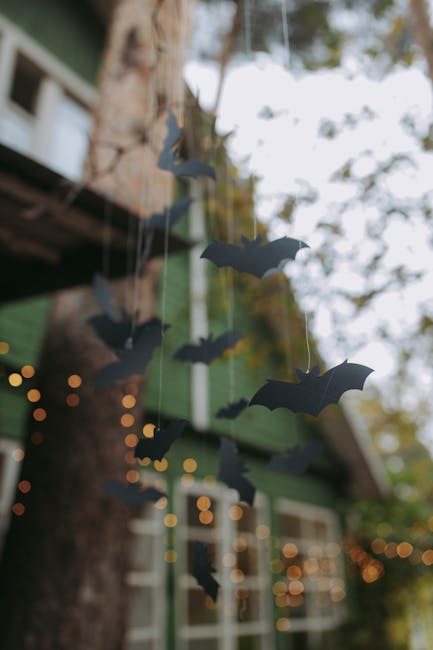
The loud song of a cicada buzzing in the heat instantly transports me back to childhood summers in Ontario. That shrill solo somehow made the sun feel even hotter. However, this article isn’t about those annual summertime vocalists. Instead, we’re diving into the miracle of periodical cicadas—those incredible insects that emerge en masse every 13 or 17 years in late spring, filling the air with their collective chorus. We include links to vendors for relevant products, and if you purchase through one of our links, we may earn a commission. These bugs feed on plant juices and lay eggs in tree branches, so you might be wondering what this massive emergence means for your garden. Are you ready to witness this extraordinary event? Should you protect your trees? Keep reading to learn more!
What You’ll Learn
- What are periodical cicadas?
- Identification of periodical cicadas
- Biology and life cycle of Magicicada species
- Monitoring and predicting emergences
- Organic and chemical control methods for protecting plants
What Are Periodical Cicadas?
Cicadas belong to the Cicadidae family, part of the Hemiptera order of “true bugs,” which are insects with piercing-sucking mouthparts and unique “half-wings.” While people often call any insect a bug, entomologists reserve the term “true bug” for species like cicadas. Unlike the annual dog-day cicadas (Tibicen spp.) that serenade us every summer, periodical cicadas of the Magicicada genus have synchronized life cycles, emerging as adults in vast numbers every 13 or 17 years, only to disappear entirely until their next cycle.
Seven species within the Magicicada genus make up this phenomenon. Three species, primarily found in northern North America, emerge every 17 years: Magicicada septendecim (Pharaoh’s cicada), M. septendecula (Decula periodical), and M. cassini (Cassini periodical or dwarf periodical). The other four, distributed in southern regions, emerge every 13 years: M. tredecim (13-year decim), M. neotredecim (John and David’s cicada), M. tredecula (13-year decula), and M. tredecassini (13-year Cassini).
Native to eastern North America and parts of the Midwest, these large insects emerge over one or two nights in late May to early June, creating a deafening chorus in the trees. Since 1893, a numbering system has tracked these emergences, grouping cicadas into “broods” identified by Roman numerals. There are 12 broods of 17-year cicadas and three broods of 13-year cicadas. For instance, Brood X (the Great Eastern Brood) emerged in 2021, while Brood XIII (Northern Illinois Brood) and Brood XIX (Great Southern Brood) are expected in 2024. Checking resources like the University of Connecticut’s cicada tracking tools can help predict when and where the next emergence will occur. Occasionally, “stragglers” appear one or four years off-schedule, surprising observers with unexpected songs.
Periodical cicadas are xylem feeders, consuming a low-nutrient plant fluid responsible for water transport. This diet, along with predator avoidance strategies, contributes to their exceptionally long life cycles. Birds and other predators relish these insects, making synchronized mass emergence a key survival tactic.
Periodical Cicada Identification
Measuring about 1.5 inches long, periodical cicadas are smaller than their annual counterparts, which can reach up to 2.5 inches. Freshly molted periodical adults appear pale, but their exoskeletons harden into a striking black with red or orange eyes, clear wings, and red-orange wing veins. Females possess a sharp ovipositor for egg-laying, while males produce a shrill buzz. In contrast, annual cicadas have green eyes and greenish wing veins, emerging from July to September, making differentiation straightforward.
Biology and Life Cycle
Cicada nymphs spend 13 or 17 years underground, living 2 to 24 inches deep and feeding on tree root xylem. In their final year, they burrow to just an inch below the surface, often pre-building exit tunnels in damp soil. When spring soil temperatures hit 64°F, they emerge simultaneously, climbing up vertical surfaces like tree trunks to molt. The nymph’s skin splits, revealing a pale, soft-bodied adult. Within hours, the exoskeleton hardens to black, and the cicada can fly—albeit clumsily.
Males aggregate in dense “leks” in sunlit treetops, singing to attract females. The mating ritual is complex; for instance, in M. neotredecim (John and David’s cicada), females respond to male calls with wing flicks, prompting further vocalizations like “phaaaroah” and “te te te” before mating. A week to 10 days post-mating, females lay eggs by slicing into pencil-width branches, depositing up to 400 eggs over a month. After six to seven weeks, tiny white nymphs hatch, drop to the ground, burrow into the soil, and begin feeding on roots for the next cycle. Adults die post-reproduction, their bodies decaying into the soil and enriching it with nutrients.
Oviposition can cause “flagging” in trees, where peripheral branches wilt and die, potentially inviting diseases like fire blight in fruit trees. However, for healthy, mature deciduous trees, this acts as natural pruning, often boosting fruit and flower production the following year. Cicadas pose no threat to vegetables, flowers, or humans, focusing solely on hardwood trees for feeding and egg-laying. Their long mouthparts and ovipositors may look intimidating, but they don’t bite.
Monitoring Cicada Emergences
The brood numbering system makes predicting emergences straightforward, allowing gardeners to prepare protective measures for young trees. Look for pre-dug emergence tunnels—half-inch holes appearing in spring a few weeks before optimal soil temperatures—as a sign of impending activity. If missed, the males’ buzzing begins about a week before females lay eggs, giving you time to act.
Organic Control Methods
An integrated pest management (IPM) strategy combining cultural, physical, and biological controls works best. Mature trees typically recover from oviposition damage without lasting harm, with branch death often being cosmetic. Focus protective efforts on trees younger than four years, as they are more vulnerable due to smaller branch diameters preferred by cicadas.
Cultural Control
Avoid transplanting trees in the fall or spring before a predicted emergence, as post-planting stress combined with cicada damage can hinder establishment. Refrain from pruning beforehand, as stressed young trees may not survive heavy oviposition. Once egg-laying concludes, prune dying branch tips to remove decaying material if desired.
Physical Control
Physically barring cicadas from young trees is the most effective defense. Use netting or screens with a weave of one centimeter or less (like mosquito screens or cheesecloth), covering trees and securing the mesh around the trunk to block nymphs from climbing underneath. Install barriers before emergence and maintain them for four to six weeks post-emergence. Tree wraps on larger trunks can also deter nymphs from ascending.
Biological Control
Natural predators like birds feast on cicadas during emergences, though the sheer volume often overwhelms them. A unique fungal parasite, Massospora cicadina, synchronized with cicada life cycles, infects adults, turning them into “live zombies.” Infected males mimic female mating signals, spreading the fungus further. Spores form masses on the abdomen, rendering cicadas infertile before killing them, then falling to infect future nymphs underground.
Organic Pesticides
Kaolin clay applications can reduce oviposition by creating a protective layer on tree surfaces. Mix with water in a backpack sprayer, apply to the entire tree, and reapply every seven days or after rain. Shake the mixture well before each use to prevent settling.
Chemical Pesticide Control
For home gardeners, chemical pesticides like pyrethroids are less effective than physical barriers. Frequent applications (every two to three days) may be necessary as cicadas migrate from nearby areas, and such treatments can harm beneficial insects that control other pests like spider mites. Physical exclusion remains the preferred method.
North American Magic
The synchronized emergence of thousands of periodical cicadas is a breathtaking spectacle unique to eastern North America. Have you witnessed this event? Are you anticipating an emergence in your area this year? Have your trees ever suffered damage from cicadas? Share your experiences in the comments below!







